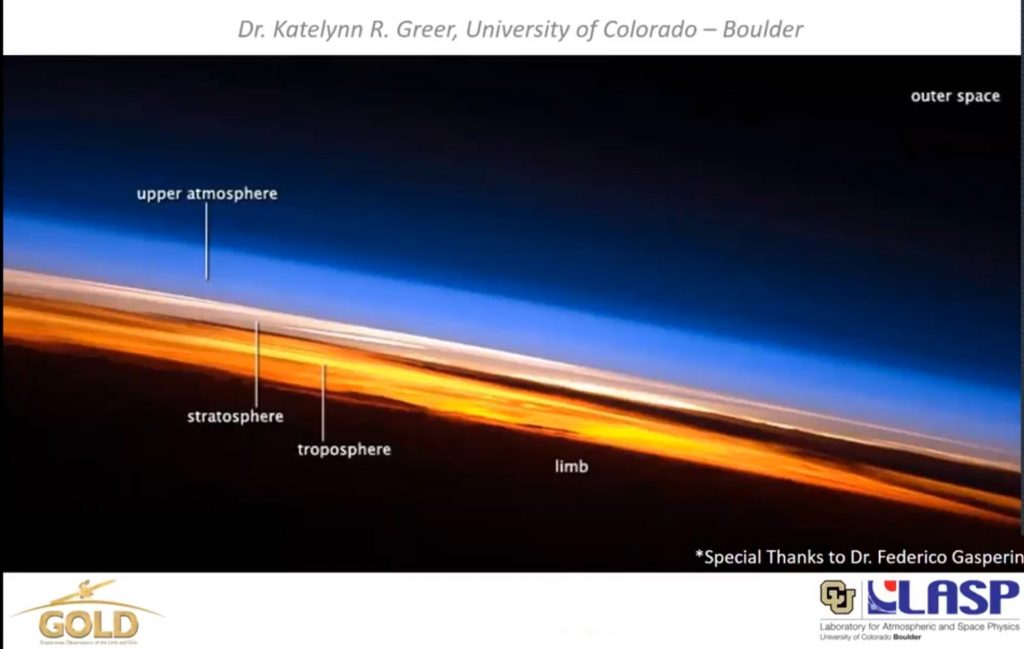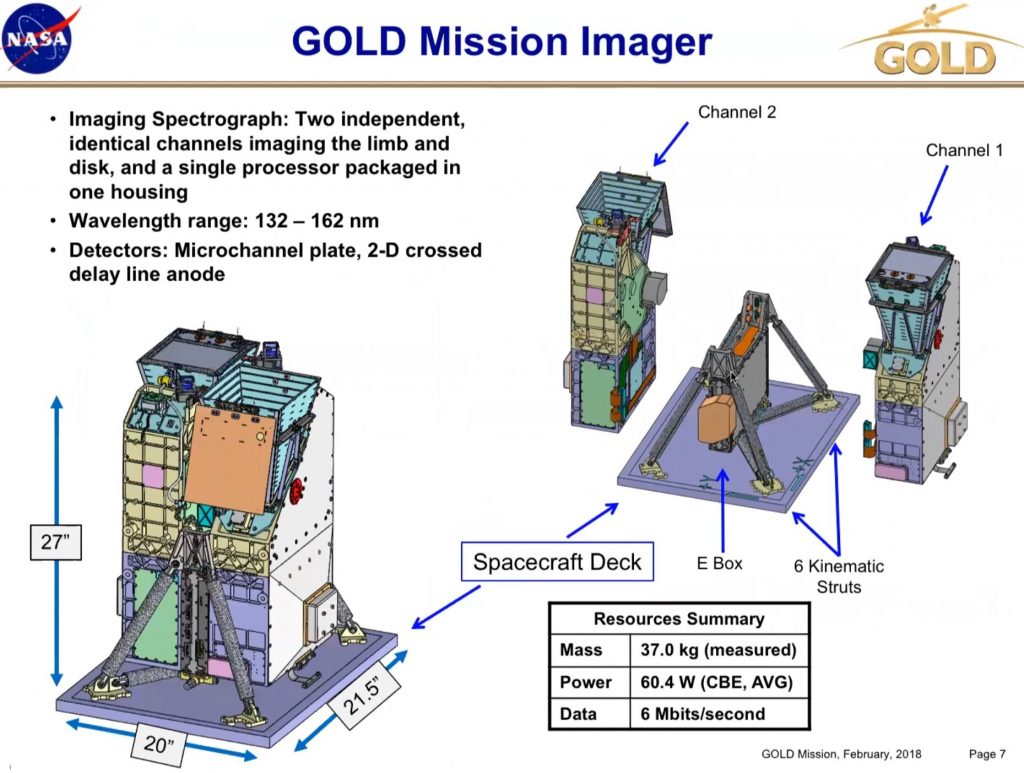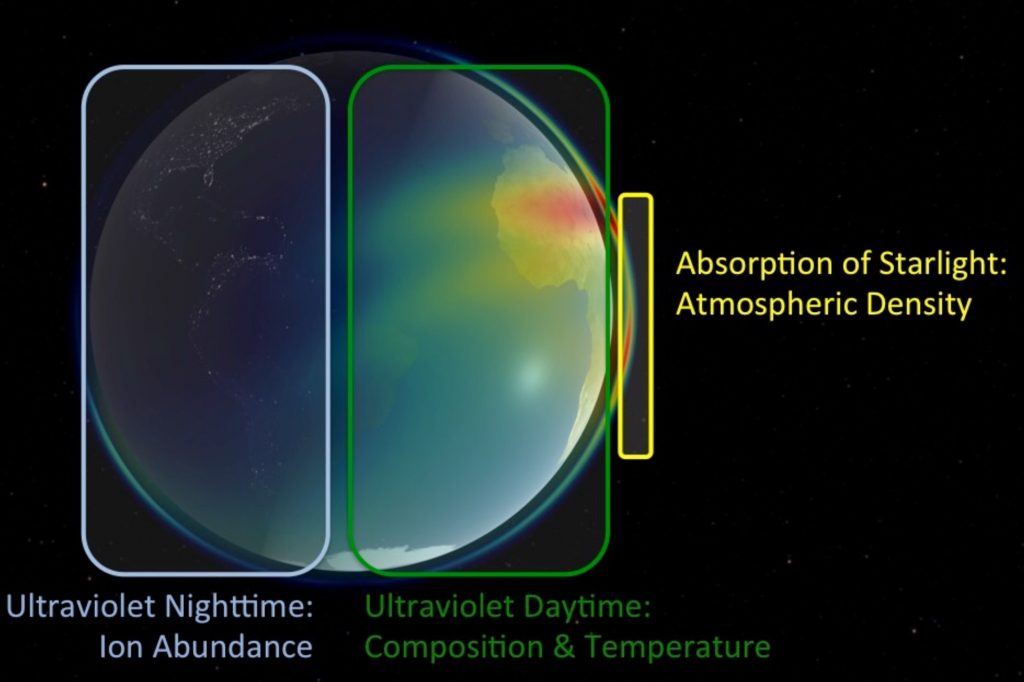GOLD, continued:

In this photograph taken from the ISS, the limb of the Earth is its edge. Above that is the troposphere (gold), stratosphere (silver), and upper atmosphere (blue) and space (black). The upper atmosphere is made up of the mesosphere and thermosphere that also includes the charged ionosphere. The upper atmosphere is where satellites and International Space Station are located and through which GPS and radio signals travel. Understanding the weather of this area will help to protect the ISS and satellites and enable the development of models to forecast events that will effect space-based technologies and on Earth the power grid.
How space near Earth interacts with the weathers of space and Earth is examined through far ultraviolet spectroscopy using two identical ultraviolet imaging spectroscopes in the GOLD instrument. About 80 pounds and the size of a mini refrigerator, it was built by the Laboratory for Atmospheric and Space Physics of the University of Colorado at Boulder. Above the Americas every 30 minutes, these completely programmable spectroscopes independently image the upper atmosphere above the limb and disk of Earth within the wavelength range of 132-162 nanometers in two channels.


NASA’s GOLD mission using ultra-violet spectroscopes observes the thermosphere at 160 km above Earth’s surface both during day and with the help of Earth-Limb occulting star at night (Courtesy NASA GSFC/SVS/University of California, Berkeley)
During the daytime above Earth’s disk, the spectroscopes monitor temperature and the density ratio of atomic oxygen (O) to molecular nitrogen (N2). At night, they measure the peak density of the ionosphere through ionized oxygen (O+) density. For the limb, they measure the temperature at the top of the thermosphere and how the density of molecular oxygen (O2) changes with specific altitude. This is done by measuring how light from ultra-violet stars, occulting with the limb, is absorbed by the Earth’s atmosphere. All of these observations will help to show how the temperature and relative levels of particles such as atomic oxygen, gaseous oxygen, ionized oxygen, and molecular nitrogen change and move within the neutral thermosphere and impact the charged ionosphere.
